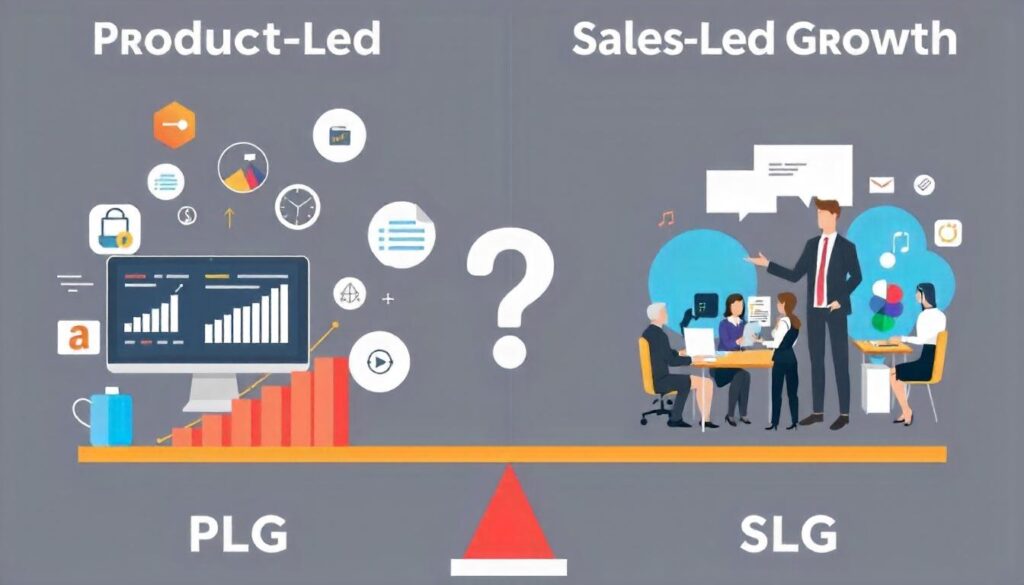The Art of Social Selling: What It Is and How to Make It Work

Traditional sales techniques are evolving. Enter social selling: the art of leveraging social media platforms to find, connect with, understand, and nurture sales prospects. It’s a modern approach that prioritizes building relationships and providing value over the hard sell. In this article, we’ll explore what social selling is, its benefits, and how you can master […]
The SaaS Business Metrics That Matter Most and Why

In the dynamic world of Software as a Service (SaaS), understanding and tracking key business metrics is crucial for sustained growth and success. These metrics provide valuable insights into the health of the business, guiding decision-making processes and strategic planning. Among the myriad of metrics available, four stand out as particularly essential: Monthly Recurring Revenue […]
Unlocking Higher Conversions: The Best Technique for Conversion Rate Optimization

In the ever-evolving world of digital marketing, increasing conversion rates is a top priority. Conversion Rate Optimization (CRO) involves strategies and techniques aimed at turning website visitors into paying customers. While numerous methods can enhance CRO, one technique consistently stands out: A/B testing. This article will delve into why A/B testing is the best technique […]
Marketing Activities a Startup Should Focus on When Looking for Pre Product/Market Fit

For startups in the early stages, finding product/market fit is a critical milestone. Before reaching this point, marketing efforts should be strategically designed to gather insights, build awareness, and attract early adopters. This phase requires a unique approach that differs from traditional marketing tactics. In this blog post, we will explore the key marketing activities […]
Product-Led Growth vs. Sales-Led Growth: Which Strategy Will Skyrocket Your Business?

In the ever-evolving landscape of business strategies, two dominant models have emerged as front-runners in driving company growth: Product-Led Growth (PLG) and Sales-Led Growth (SLG). While both strategies aim to boost revenue and expand market share, they fundamentally differ in their approaches. Understanding these distinctions can help businesses determine the best path to success. This […]
Cracking the Code: The KPI That Proves Your B2B SaaS Has Achieved Product-Market Fit

In the highly competitive world of B2B SaaS (Business-to-Business Software as a Service), achieving product-market fit is a critical milestone that can determine the trajectory of a company’s success. But how do you know when you’ve truly hit that sweet spot where your product perfectly meets the needs of your target market? Identifying the right […]
Proven Strategies to Boost Your E-Commerce Website

Standing out and driving sales for your E-Commerce website can be a daunting task. Whether you’re just starting out or looking to enhance your online store’s performance, implementing effective strategies is key to boosting sales. This article outlines actionable steps to help you skyrocket your e-commerce sales and achieve sustained growth. 1. Optimize Your Website […]
The Secret Weapon for Smarter, Faster Investor Decisions

Making informed investment decisions quickly is important. While data and algorithms have revolutionized the field, human insights remain an indispensable asset. Investors are increasingly leveraging these insights to navigate complex markets, uncover hidden opportunities, and mitigate risks. This article explores how human insights are transforming investment strategies, leading to faster and smarter decisions. The Power […]
Mapping Success: The Role of Customer Empathy in Journey Mapping

Understanding the customer journey is essential for businesses aiming to deliver exceptional experiences. Journey mapping, a strategic tool, allows companies to visualize the customer experience, identify pain points, and create more effective strategies. A critical component of successful journey mapping is customer empathy, which ensures that the customer’s perspective is at the forefront of every […]
Key Metrics of Importance for a B2B SaaS Sales Pipeline

In the world of B2B SaaS (Software as a Service), a well-structured sales pipeline is essential for driving growth and ensuring long-term success. Monitoring and optimizing the sales pipeline requires a keen understanding of key metrics that provide insights into performance, efficiency, and potential areas for improvement. This article will explore the critical metrics for […]